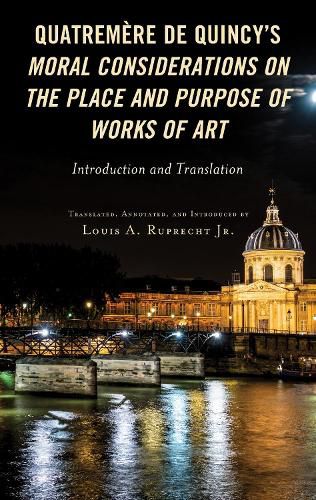Readings Newsletter
Become a Readings Member to make your shopping experience even easier.
Sign in or sign up for free!
You’re not far away from qualifying for FREE standard shipping within Australia
You’ve qualified for FREE standard shipping within Australia
The cart is loading…






Antoine Chrysostome Quatremere de Quincy (1755-1849) was the most important Neoclassical
art historian in the generation after Johann Joachim Winckelmann (1717-1768). It is difficult
now to appreciate his importance, due in part to the lack of translations of his 21 published
books: three were rendered into English in the 19th century, and one in the 21st. The Moral
Considerations has long been considered the most shattering polemic against public museums
ever written. But I will show that Quatremere’s polemic was aimed, not against museums per se,
but rather against the imperialist and secularist curatorial purposes of Parisian museums in the
age of Revolution. His Neoclassical commitments maintained the centrality of religion, and of
incarnation, to any proper understanding of the place and purpose of the fine arts.
$9.00 standard shipping within Australia
FREE standard shipping within Australia for orders over $100.00
Express & International shipping calculated at checkout
Antoine Chrysostome Quatremere de Quincy (1755-1849) was the most important Neoclassical
art historian in the generation after Johann Joachim Winckelmann (1717-1768). It is difficult
now to appreciate his importance, due in part to the lack of translations of his 21 published
books: three were rendered into English in the 19th century, and one in the 21st. The Moral
Considerations has long been considered the most shattering polemic against public museums
ever written. But I will show that Quatremere’s polemic was aimed, not against museums per se,
but rather against the imperialist and secularist curatorial purposes of Parisian museums in the
age of Revolution. His Neoclassical commitments maintained the centrality of religion, and of
incarnation, to any proper understanding of the place and purpose of the fine arts.